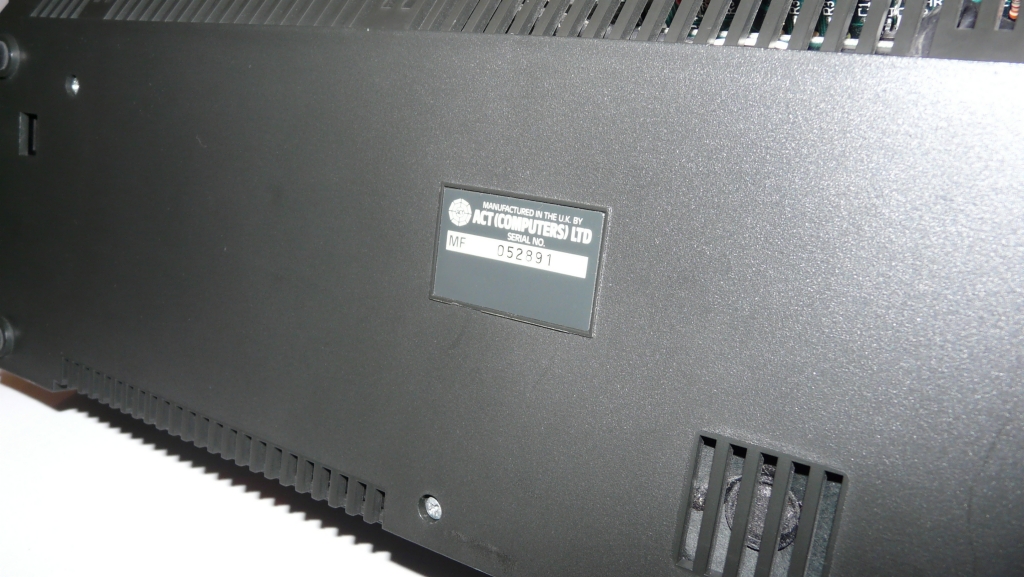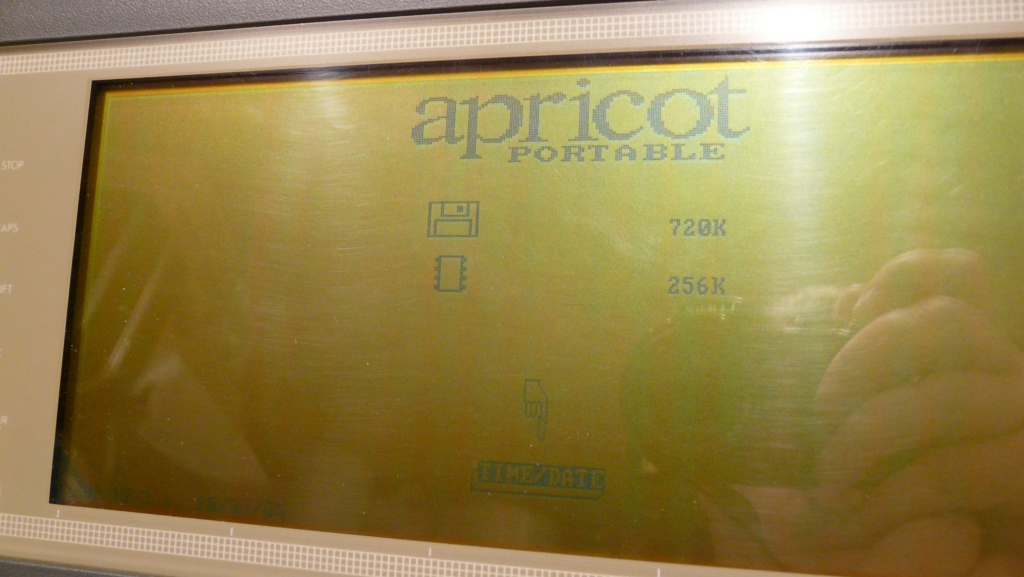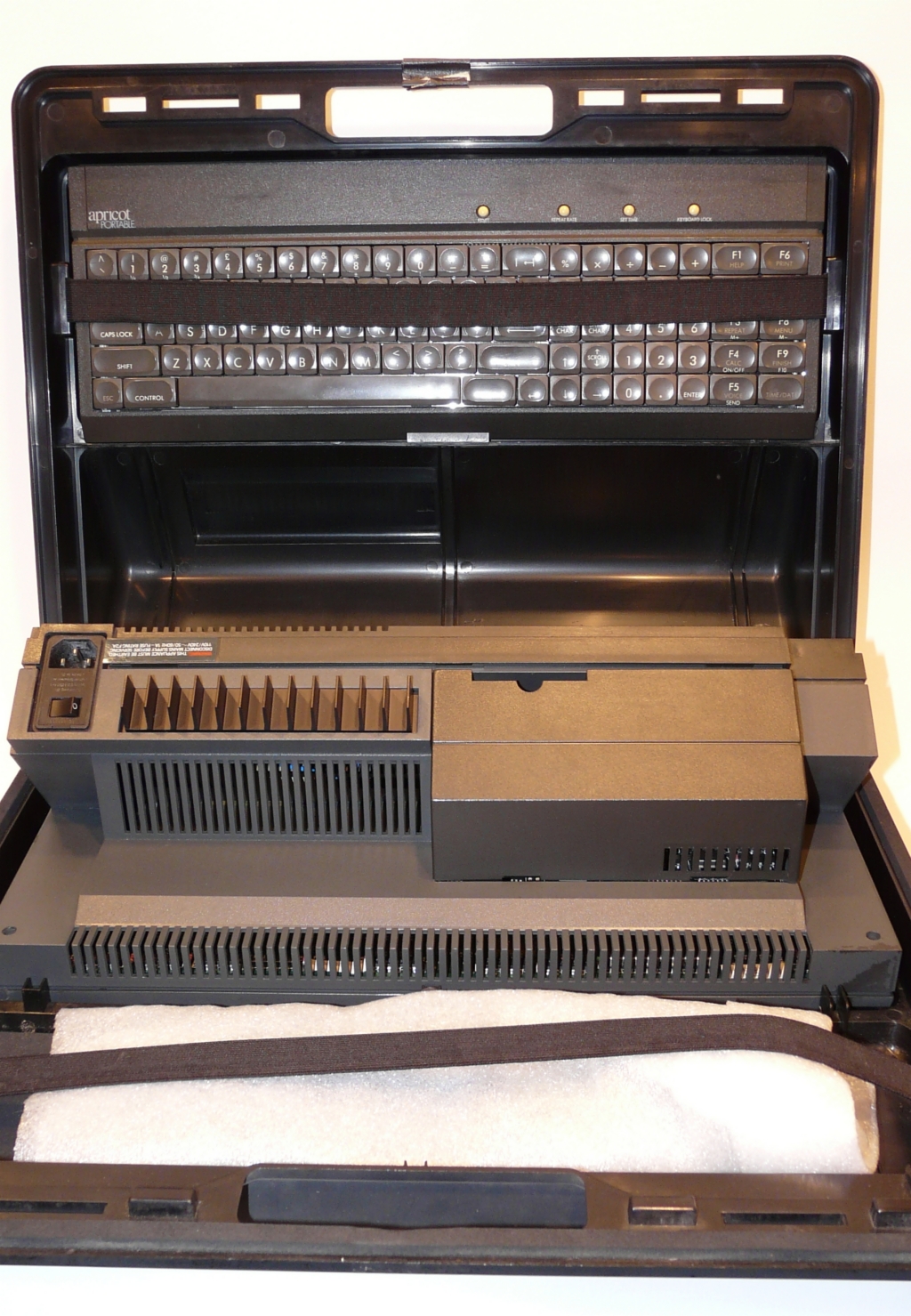

|
|
|
|
From Wikipedia, the free encyclopedia
Apricot Portable was Apricot Computers' attempt at a portable computer, first released in 1984. It had a 3.5" floppy drive, 4.77 MHz CPU and 256 KiB RAM. It was the first computer to use an 80-column/25-line LCD and speech recognition for input/output. The speech recognition software held 4096 words, with only 64 available at a given time. It was also unique in the way that it had an infrared link between it and the keyboard; this was relatively new at the time. However, if an object blocked the infrared beam, communications would be cut off. The Apricot also featured a somewhat Mac-like graphical interface. It was originally priced at £1965. External linksThere was also an optional and quite innovative trackball available, but a classic Microsoft mouse could also be used through the serial port. The Apricot Portable shipped with the 'Activity' front-end to the operating system, an enhanced version of the one delivered with the Apricot F1. It was quite "Mac" influenced with icon-based navigation and even a built-in icon editor ! The Apricot Portable was supplied with a great deal of bundled software : SuperWriter, SuperCalc, SuperPlanner, ACT Diary, ACT Sketch and an interactive tutorial. The built-in disk-drive located at the right-hand side of the main unit was a Sony 3.5'' disk-drive, single-sided, 720k. ACT also supplied a little external 10 MB Rodime 3.5'' hard disk called an MSD (Mass Storage Device). The large LCD was the first full 25-line liquid crystal screen to be mounted on a portable computer. It was made in Japan by Hitachi, but ACT wasn't happy with the controller, so it designed its own (very fast) display controller chip. It's possible to adjust the contrast by holding down the SHIFT and UP-ARROW or DOWN-ARROW keys together, but the angle of the display is fixed and cannot be tilted. But the Apricot Portable can also be connected to an external monitor and with the colour option, can display 640 x 256 pixels in eight colours from a palette of 16. In addition it is also possible to display data on both displays at the same time. For example, when using Supercalc 3 you could display the spreadsheet model on the LCD at the same time as displaying graphs or pie charts on the monitor ! The Apricot Portable could only be powered by mains power, there was no battery option available at all. Quite strange for a "portable" computer... The Apricot Portable did not meet with great success and was considered rather as a gadget, given its LCD screen and voice recognition features, but lacking real compatibility with other Apricot computers, in addition to its limited portability. The price was cut down in 1985, and a new version with 512k RAM was sold. The 256k model was then called FP-256, and the 512k model FP-512. NAME Apricot Portable |
ACT Apricot portable FP-256



















Copyright(c) 2011


